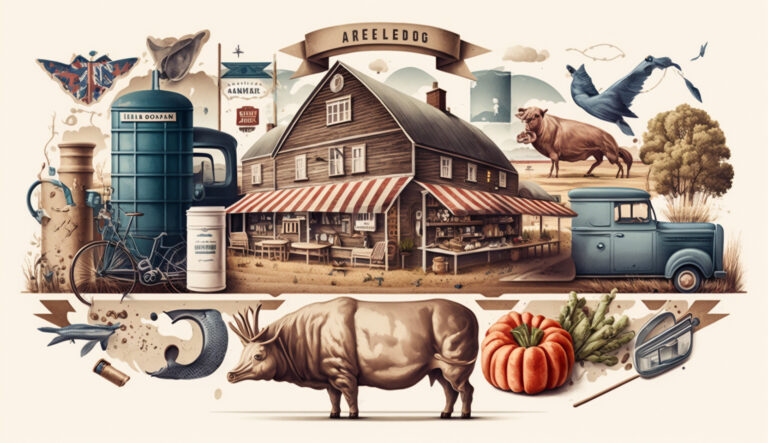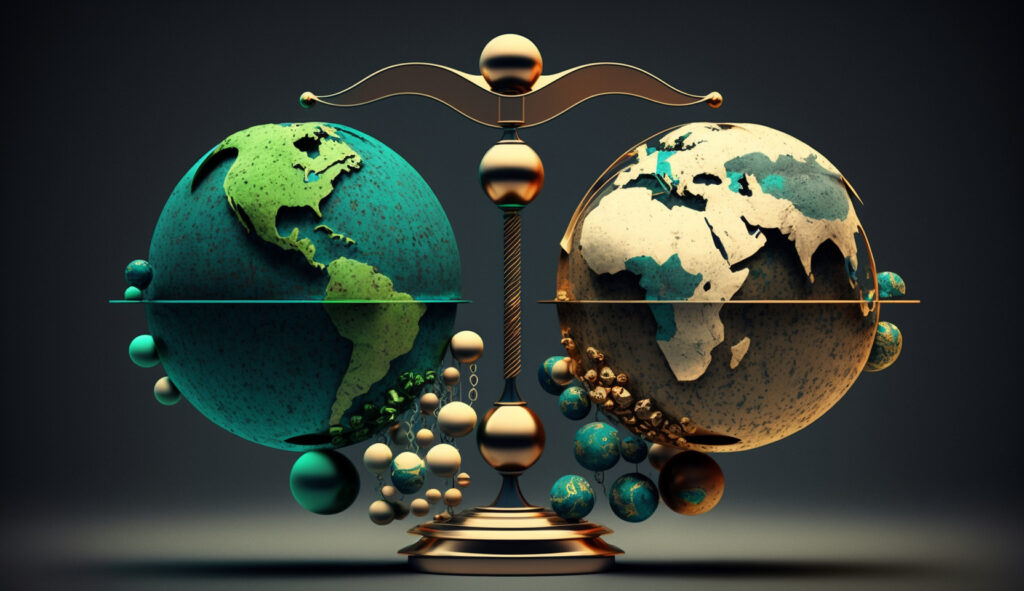
If you’re into trading, investing, or simply curious about how economies and financial markets work, understanding Gross Domestic Product (GDP) is essential. GDP serves as a key indicator of a country’s economic health and can offer insights into its future trajectory. By analyzing this indicator, we can anticipate potential actions by financial authorities and how markets might react. In today’s article, we’ll delve into the concept of GDP, its limitations, and why additional measures are crucial for capturing the full picture of a nation’s economic well-being.
What is Gross Domestic Product?
Gross Domestic Product measures the total value of all the goods and services a country produces within its borders during a specific time—usually a quarter or a year. It’s like a report card for a country’s economy, showing how much it’s growing or shrinking. By adding up the value of everything made and every service provided, GDP gives us a snapshot of economic activity in simple numbers. Economists and policymakers use it to assess an economy’s size and understand its overall performance.
How Is It Calculated?
Economists use THREE main methods to calculate Gross Domestic Product:
The production approach,
The income approach, and
The expenditure approach.
Each method offers a different perspective, but they all aim to measure the total value of economic activity within a country.
The Production Approach (Value-Added Approach)
This method starts with the total value of goods and services produced in the economy. Then, it subtracts the value of the goods and services used in production (intermediate consumption). The result is GDP from the production side.
FORMULA: GDP = Gross Value of Output – Value of Intermediate Consumption
The Income Approach
This approach looks at all the income earned within the economy, including wages, business profits, rents, and taxes, minus any subsidies. It calculates GDP based on the money people and businesses receive.
FORMULA: GDP = Total National Income + Sales Taxes + Depreciation + Net Foreign Income
The Expenditure Approach
This is the most widely used method, especially in developed countries. This approach adds up all spending on final goods and services within the economy. It includes consumer spending (C), business investments (I), government spending (G), and net exports (NX — exports minus imports).
FORMULA: GDP = C + I + G + NX
The choice of method depends on the availability and reliability of data, but the expenditure approach is often preferred for its simplicity and practicality. We will discuss this approach further.
What Are the Four Key Components?
The expenditure approach breaks GDP into four main components: consumption (C), Investment (I), Government Spending (G), and Net Exports (NX).
Consumption
This is the largest piece of GDP and includes all household spending on goods and services. It covers everyday items like food, clothing, and cars and services such as healthcare, education, or entertainment. Household consumption reflects the core activity that keeps businesses running, creates jobs, and fuels economic growth.
Investment
Investment here refers to spending by businesses on physical assets. Businesses need things like machinery, buildings, and equipment, inventories. It also includes residential construction (housing investments). This type of spending is critical for business growth and long-term economic development. Note that this does not include financial investments like stocks or bonds.
Government Spending
This accounts for all government expenditures on goods and services. Governments also pay salaries of public employees, they spend on defense, and infrastructure projects like highways and schools. However, transfer payments like social security or unemployment benefits are excluded because they are not payments for goods or services currently produced.
Net Exports
This is the difference between a country’s exports (goods and services sold abroad) and imports (goods and services bought from other countries). If exports exceed imports, net exports contribute positively to GDP. If imports are higher, net exports will subtract from GDP. This component helps gauge a country’s trade balance and role in the global economy.
The Formula
When you put it all together, the GDP formula is:
GDP = C + I + G + NX
Each of these components offers valuable insights into different parts of the economy. For example, consumption reflects household confidence, investment indicates business growth, government spending shows public sector priorities, and net exports highlight a country’s global trade position.
What Are the Limitations of GDP?
GDP is a great tool for measuring the size of an economy, but it’s not without its flaws. It tells us how much is being produced and spent but doesn’t capture everything we’d want to know about economic well-being or societal progress.
For starters, GDP doesn’t show how wealth is shared. A country might have a high GDP, but if most of the income is concentrated in the hands of a few, that’s not something GDP will reveal. It also ignores non-monetary transactions—like when people barter goods or services—or activities in the informal economy, like cash jobs or unregistered businesses, which can be a big deal in some countries.
Another issue is that GDP doesn’t reflect non-economic factors that affect our quality of life. Things like clean air, a good work-life balance, or access to education don’t show up in the numbers, even though they matter just as much (if not more). It also focuses on how much is produced, not the quality of what’s being made. A country could churn out cheap goods, inflating GDP, but that doesn’t necessarily mean people are better off.
Then there’s the problem of externalities. GDP doesn’t account for the downsides of economic activity, like pollution or resource depletion. A factory boom might boost GDP in the short term, but if it’s causing long-term environmental damage, GDP won’t tell us that. Similarly, it doesn’t give us any clue about whether a country’s growth is sustainable. A nation might exploit all its natural resources for a quick economic boost, but that’s not exactly a winning strategy for the future.
Finally, GDP doesn’t measure happiness, fairness, or overall well-being. Two countries with the same GDP can have vastly different living standards depending on how resources are distributed and on the structure of society.
Why Do Authorities Watch It So Closely?
Government authorities and central banks closely monitor GDP, along with other metrics, to adjust their policies as needed. Why is this important? Because when central banks or governments change policies—such as altering interest rates or adjusting tax rates—it can have a profound impact on financial markets and the broader economy.
For example, if GDP growth slows and the economy shows signs of contraction, central banks might implement stimulative measures to support recovery. One of their first moves is often to reduce interest rates, making credit cheaper. This encourages borrowing and spending, boosting consumption and investment to “jump-start” the economy.
Take the U.S. Federal Reserve’s response during the 2008 financial crisis as an example. Facing a sharp economic downturn, the Fed slashed interest rates to nearly zero and introduced quantitative easing programs to inject liquidity into the economy. These measures aimed to restore confidence, encourage spending, and prevent further economic contraction.
On the flip side, if GDP grows too quickly and inflation begins to rise—signs that the economy might be “overheating”—central banks may raise interest rates. Higher borrowing costs help cool demand, slow inflation, and stabilize the economy. A recent example is the series of interest rate hikes by the Federal Reserve in 2022-2023. As inflation soared to levels not seen in decades, the Fed raised rates aggressively to curb excessive spending and bring inflation back under control.
Governments can also use fiscal policy to influence the economy. For instance, tax cuts during economic downturns can put more money in consumers’ pockets, boosting demand. In 2017, the U.S. passed significant tax reforms under the Tax Cuts and Jobs Act, which reduced corporate tax rates. Proponents argued it would stimulate investment and growth, although its long-term effects remain debated.
Can We Get a Clearer Picture of Economic Health?
While GDP is a key metric for assessing a country’s economic health, it doesn’t tell the whole story. Additional measures are essential to get a more comprehensive view.
Real vs. Nominal
Nominal GDP measures the total value of all goods and services produced in an economy at current prices. It’s useful but doesn’t account for inflation. Real GDP, on the other hand, adjusts for inflation, allowing for a more accurate comparison of economic performance over time. For example, a rise in Nominal GDP could simply reflect higher prices rather than increased production. Real GDP helps distinguish between these factors.
GDP Per Capita
GDP per capita divides a country’s GDP by its population, providing an average economic output per person. This measure is particularly useful for comparing living standards between countries. For instance, while China has a massive Gross Domestic Product, its GDP per capita is far lower than smaller, wealthier nations like Norway. This suggests significant differences in income distribution and individual prosperity.
The Human Development Index (HDI)
GDP doesn’t account for quality of life or social well-being. The Human Development Index (HDI) complements GDP by including indicators like life expectancy, education levels, and income per person. Countries with similar GDPs can have vastly different HDI rankings, highlighting disparities in human development. For example, Norway consistently ranks high in HDI due to its strong healthcare, education systems, and income equality, despite having a smaller GDP than nations like the U.S.
The Genuine Progress Indicator (GPI). A Measure of Sustainability and Progress.
Critics of GDP argue it overlooks long-term sustainability. The Genuine Progress Indicator (GPI) addresses this by adjusting GDP to include factors like income distribution, environmental degradation, and leisure time. This measure provides insights into whether economic growth is truly improving societal well-being or simply exhausting resources.
Real-World Context
Consider Norway and China. Norway, with its smaller GDP, scores high in GDP per capita and HDI, reflecting strong living standards and social equality. Meanwhile, China’s large GDP doesn’t translate as well into individual prosperity, as evidenced by its lower GDP per capita and HDI rankings. These contrasts demonstrate why Gross Domestic Product alone can’t capture the full picture of a nation’s economic health.
Conclusion
GDP is a vital metric that governments and central banks monitor closely, as it reflects the overall health of an economy. When the economy slows down or grows too quickly, policymakers use GDP as a guide to adjust monetary and fiscal policies—actions that can significantly impact economies and financial markets.
For traders, investors, and policymakers, understanding this indicator is essential. However, it’s important to recognize its limitations. Metrics like GDP per capita, the Human Development Index (HDI), and the Genuine Progress Indicator (GPI) provide a more comprehensive view of economic health, quality of life, and sustainability. By combining these measures, we can gain deeper insights into a country’s progress and priorities.
If you’re serious about enhancing your trading or investing strategies through fundamental analysis, mastering GDP and its context is a critical step.
We’re excited to share our insights and strategies on Finansified.com. If you’re eager to stay updated with expert analysis, market trends, and actionable advice, make sure to join a community of savvy investors and Forex traders and Brokers who are transforming their financial futures with the right knowledge and tools. Don’t miss out on the latest posts, subscribe now, and elevate your trading game with proven expertis



